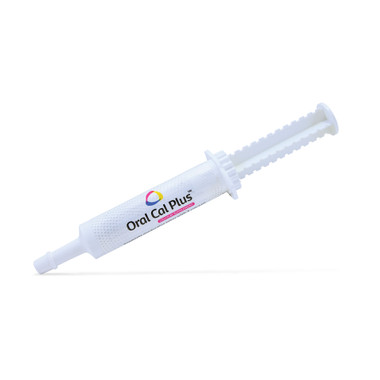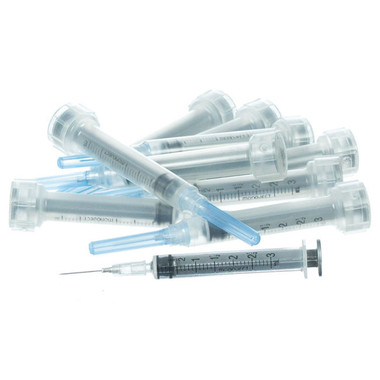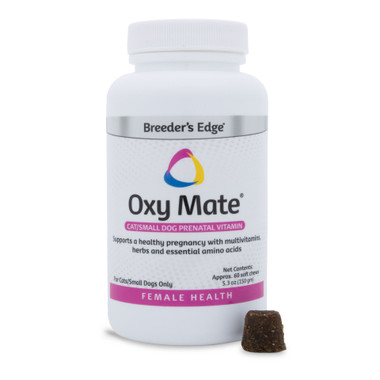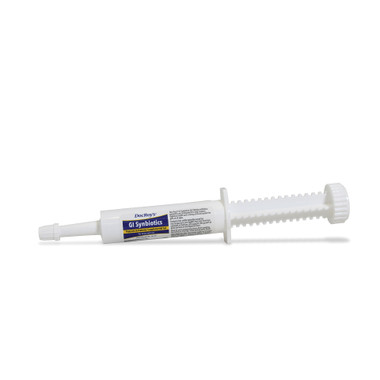A Cry for Help!...our American Mustangs!
Estimated 0 min read

Mustangs running free
What’s to be done for Our Wild Horses in America?
A classic image that lives in each American’s heart is that iconic symbol of freedom: the wild mustang. Just picture this beautiful creature atop a mountain with mane flowing and nostrils flaring.
Sowhen you hear about the herds of wild horses being rounded up and abused in the process, you are immediately up in arms. This can’t be allowed to happen!
We’ve been hearing stories abouthorse abuse(and burros) that made our blood boil. So we’re bringing it to your attention now. Following is a brief analysis of the issues and possible solutions.
Where did the Wild Horses come from?
Our wild mustangs originally came to North America via Spanish explorers and conquistadors.Subsequently,some of their horses got loose and their descendents spread over the land. The word “mustang” comes from the Spanish wordmesteño, meaning a “stray” or “ownerless beast.” Today, it means any free-roaming horse.
How many of them are there?
Estimates are there are 225,000wild horses in Americatoday. The vast majority are located across the West. The U.S. Bureau of Land Management (BLM) is the federal agency tasked with managing about 83,000 of them. The rest are located on other public lands and on Native American nations where the BLM has no jurisdiction.

Wild horses being round up
Why are they being rounded up?
The short answer: Overpopulation.
There are just too many wild horses and burros, who reproduce at unsustainable rates.Consequently, as they forage for food, they inadvertently tear up and trample the high desert vegetation. They compete with cattle and other animals for sustenance. And since the West is getting hotter and drier, the animals also have trouble finding water.As a result,a tragic number of them die of starvation and dehydration.
What are the laws about rounding them up?
Congress passed the Wild Free-Roaming Horses and Burros Act in 1971. This was a response to public outrage about wild horses being shot or “gathered” to be sent to slaughterhouses. In fact, horses are the only animals except bald eagles that are specifically protected from hunting and commercial slaughter.
So what has happened since the passage of that Act more than 50 years ago? The BLM has never been able to effectively manage and implement the Act. Today, theBLM mustangsare rounded up and held in “storage,” where they remain for years and cost hundreds of millions of dollars. Animal welfare groups, horse advocacy groups, cattle ranchers, landowners and conservationists still disagree on what to do about the horses.
Despitethe protections afforded by the Act, ongoing round-ups and storage management continue to be a huge issue. Read on…

Horse injuries occur during round up
What happens to horses that are rounded up?
Unfortunately, the answer to this question is more than disturbing – it’s enough to enrage any animal lover.
There are too many instances of disastrous roundups. TheBLM mustangsare injured (broken bones, trampled) and separated from their families. They are forced, in sheer terror, into the holding facilities. “Gathers” or Roundups are often conducted during heat waves when air quality is poor due to wildfires in the area. Helicopters run the horses to exhaustion. It’s poorly planned & horrifying!
In additionto the physical stresses sustained by the horses, there’s the problem of inhumane treatment. For instance, the American Wild Horse Conservation (AWHC) discovered video footage of BLM contractors kicking a collapsed wild horse in the head. This is clearly against the law and is considered criminal conduct. It filed a formal notice of abuse with the BLM to shut down the annual round-up.But, how often do things like this happen that aren’t captured in a video?
Recently, representatives from theAWHCvisited the Winnemucca Holding Facility in Nevada. They found more than 2,000 wild horses confined in holding facilities. They witnessed the following disturbing conditions:
- Lack of shelter and windbreaks, leaving the animals exposed to weather.
- Pens were too small to accommodate the number of horses they held, leading to overcrowding, aggression and competition for resources, especially water.
- What appeared to be a severely injured or dying foal lying in the open pen.
- 23 horses were euthanized or died at this same facility within a 24-day window in 2023. All of these deaths were attributed to suspected botulism poisoning.
Even worse,some horses may be in facilities like these for YEARS. That makes it so much more difficult to train these “feral” animals so they can be adopted.

So what’s the solution to control mustang population?
Possible solutions
The roundups can be a horrifying experience for witnesses and animal lovers. Indeed, who could stand to watch these beautiful creatures in such a heartbreaking situation?
And yet, if we just let them continue to roam freely and do nothing, many horses and burros will die from lack of food and water.Even more,it’s possible legislators will think there are no alternatives, so lethal options will once again be on the table. That’s even more appalling.
Everyone wants to see the herd numbers reduced without harming horses in the process. Here are some of the options that are being advocated and tried:
Fertility control
Whilebirth-control programs seem like the perfect answer, they have proven difficult to implement. Some horse advocates are concerned about what fertility control programs do to the horses’ health, genetic diversity and unintentional sterilization.Still, immuno-contraceptive vaccines can control herd growth (and save public funds).Butto be effective, it’s necessary to administer the vaccines to a large percentage of a target herd. And one must be in close proximity to the horses to apply. Gathering these horses will be necessary to accomplish this – so the round-up is still in play.
BLM mustang adoptionprograms
The unfortunate truth is that adoption rates are low. Of all the horses that are rounded up, only about a third are adopted. Remember, these are “feral” creatures that have never been domesticated.For that reason,it’s vital to handle and train the captured horses to improve their adoptability.
Another aspect of adoption is ensuring that adopters don’t turn around immediately and sell the horses to a slaughterhouse. Fortunately, theBLM mustang adoptionprogram requires that horses and burros sold by BLM wait a full year before the title transfers to the new owner.
Rehoming of horses
Another option is to relocate horses and burros that are being held in holding facilities. This would be to pasture facilities that provide a free-roaming environment for wild horses and burros. Of course, this would only be possible for a limited number of horses. And there are far more horses being held in storage facilities than can possibly be re-homed in this way.
Drones- A modern solution
Drones represent a modern approach to managing wild horse populations, offering advantages such as reduced stress on the animals and increased safety for handlers. Equipped with cameras, drones can monitor herds efficiently, delivering birth control and tranquilizers with precision. This non-invasive method not only minimizes the risk of injury but also allows for accurate population counts. While ethical considerations and public perception are crucial, the potential of drones in wildlife management continues to grow, promising a revolutionary shift in how we approach conservation efforts.

Wild horse running the western range
Conclusion
The issue of what to do about our beloved mustangs continues to plague our nation. There is no easy answer. Horse lovers and equine advocacy groups are on it. They’re doing all they can to ensure BLM is enforcing the current laws and treating the mustangs and burros humanely. Understanding that the horses compete with other animals for forage and water, ecological health is super important. And, of course, everything related to this problem is highly expensive, with millions of dollars involved every year.
A comprehensive, multi-tiered approach is the only way to get wild horse populations under control.
We need to:
- Ramp up fertility treatments
- Ensure safe and healthy storage
- Inspire and encourage more adoptions
And here’s what YOU can do:
- If you love horses and want to help save these iconic herds,consider supporting a wild horse advocacy group.There are many out there who are working in various ways to mobilize public support to protect American wild horses and burros.
- Or even further:Adopt a horse or burro from a BLM holding facility. See below for a wonderful case study on how a nightmare can be turned into a dream!
Case study

Leela and Gabrielle competing
Smiling Little Leela
Gabrielle Edgerly has a great story to tell about her own BLM horse. Leela is a beautiful 15-year old BLM Mustang mare from Adobe Town HMA in Wyoming. This lovely little gal was rounded up as a yearling during the October 2010 AdobeTown gather. She was sent to a holding facility where she was kept in short-term holding for 5 years. Five years!!!
This mare was one of the lucky ones. Gabrielle explains, “The BLM chose her as one of 40 wild mustangs to be part of the 2016 Extreme Mustang Makeover held in Jacksonville, Florida. These horses were assigned to a trainer to train for 100 days, enter the competition and be sold at the Makeover Auction at the end of the competition. Through a bunch of lucky turns, Leela was assigned toHannah Catalina, an excellent trainer who had trained five mustangs before her. Amazingly, Leela and Hannah came in a Very respectable third in the Extreme Mustang Makeover!”

Leela successfully competing
You can see her freestyle routinehere. What a difference from the wild, unbroken mare who spent her first few years untrained and unloved in a holding facility!
Gabrielle tells us the rest of the story: “Leela was sold at the auction and went on to do guided trail rides in Aiken, S.C. However, that didn’t work out because as part of her training, she had been taught to lie down when her left shoulder was touched. So I bought her. I had never considered a mustang, but she was the perfect size and such a sweet, kind and friendly horse.”

Leela – winner in dressage and Grabrielle’s heart
Happy Ending
Now, Gabrielle and Leela compete successfully at First Level in dressage, enjoying the competition and each other. Her advice to people who adopt wild mustangs: “Give yourself and the horse time to build confidence and strengthen your trust. There are so many things these gathered horses have not been exposed to, like electric fences and lots of people – but they are very smart, they adapt quickly and have a positive attitude thanks to your strong bond.”
This case study is an inspirational story of what can be done for the wild mustangs who are rounded up and taken off the range. A loving, patient home, filled with success and caring.
The Wild Horse Overpopulation Issue
The wild horse population in the western United States has become a pressing concern. It has lead to overpopulation that strains local ecosystems and threatens the health and ..lives of the horses. Traditional management methods, like roundups, have limitations. They cause undue stress,injuries and even death for the American Mustang while merely shifting the problem without addressing the root causes. As a result, innovative solutions are greatly needed to ensure both effective and ethical population control.
Banixx for Horse Lovers:
We hope that this short blog helps you understand the disease so that you can be on the defense for your horse’s health. Our large variety ofhorse blogscovers a myriad of equine questions: check us out! We cover more serious topics such asStranglesorRain Rotbut then we also talk aboutEinstein, the World’s Tiniest Horse! Stay with us for more helpful or fun blogs!
Sources:
https://www.aspca.org/improving-laws-animals/public-policy/aspcas-commitment-wild-horses
https://americanwildhorse.org/media/shocking-animal-cruelty-documented-fedl-wild-horse-roundup
https://www.wildhoofbeats.com/podcast/wild-horse-roundups
https://www.equineadvocates.org/the-issues/wild-mustangs-burros/take-action-on-wild-horses/
https://www.sierraclub.org/sierra/2023-2-summer/feature/what-s-be-done-about-wild-horse-herds-american-west
https://www.fastcompany.com/90504789/these-drones-can-plant-40000-trees-in-a-month-by-2028-theyll-have-planted-1-billion


















